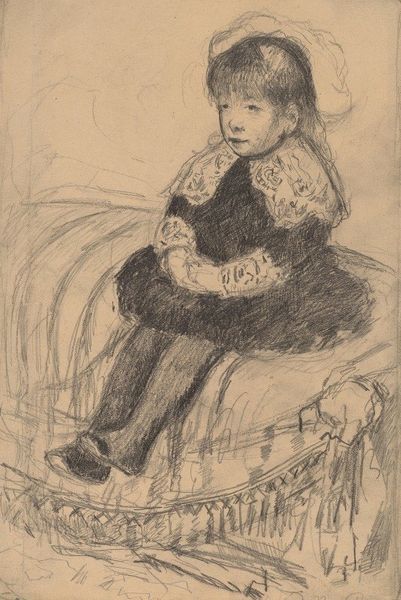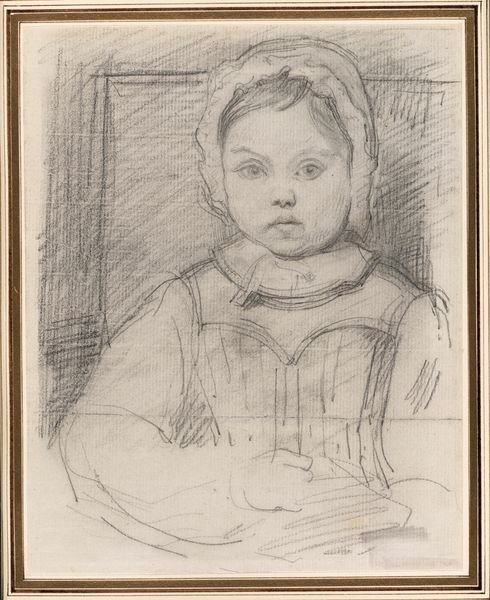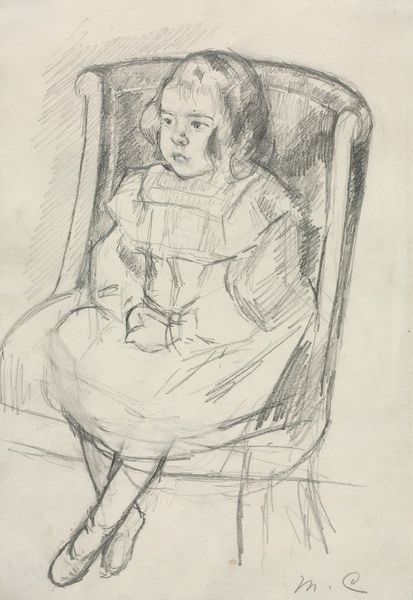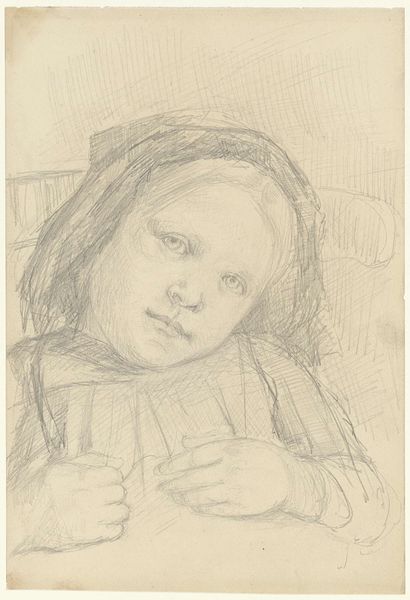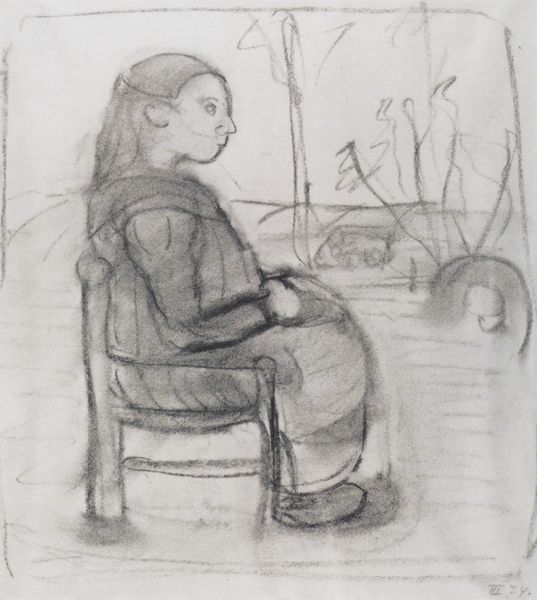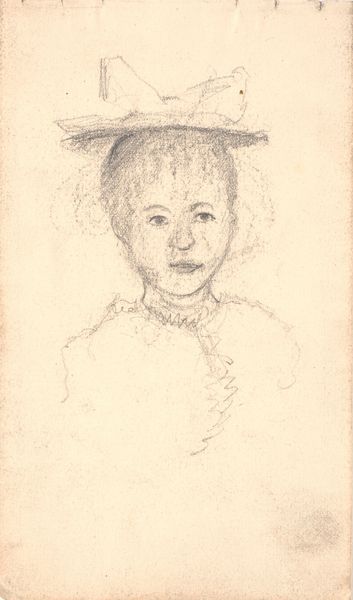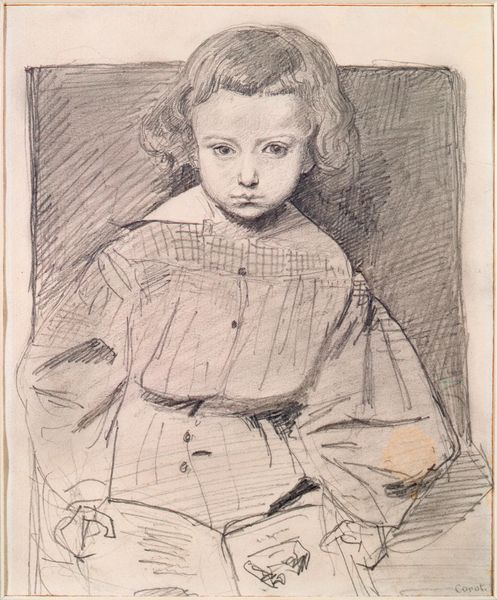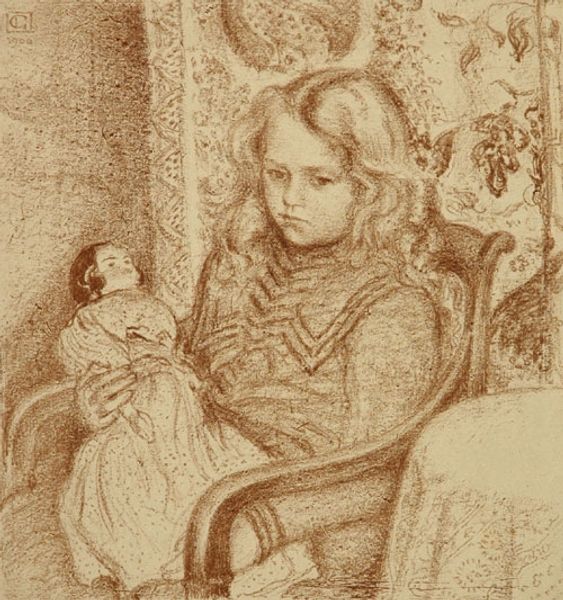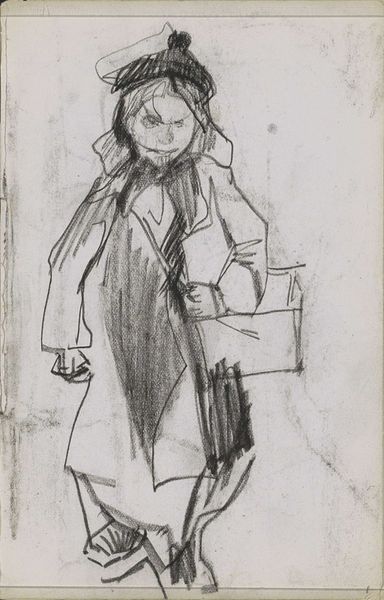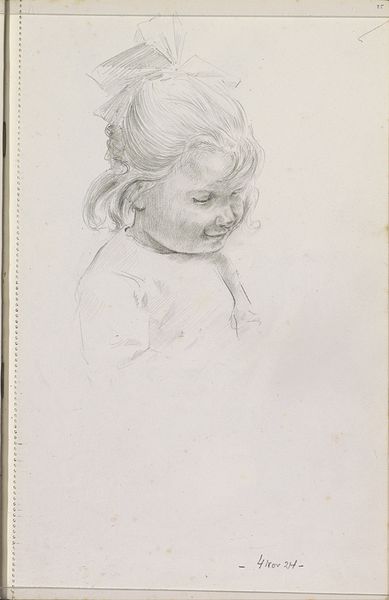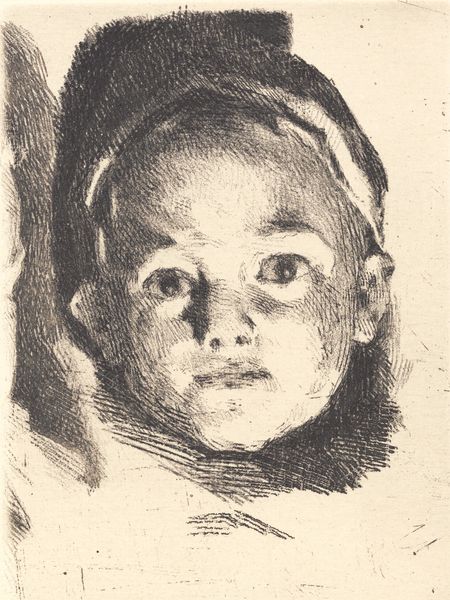
Dimensions: 29.2 x 19.7 cm
Copyright: Public domain
Curator: Here we have Paula Modersohn-Becker’s "Seated child in an Armchair" dating back to 1902. It’s a pencil drawing. What strikes you most about it? Editor: Melancholy. A quiet sadness hangs in the air. Like a song sung softly off-key. And such delicate lines. As though she sketched the child in a hurry, catching only the ghost of its essence. Curator: Modersohn-Becker was quite radical, moving away from academic tradition. Her raw expressive style captured intimate domestic scenes and often portrayed women and children with a particular frankness that was uncommon. Editor: It feels less posed than, say, a formal portrait. More…observed. As if we’ve stumbled upon this child lost in its own thoughts. You almost wonder what stories it's concocting, sitting so still. I imagine her watching, capturing stolen moments with her pencil. There’s a gentle simplicity to that process I love. Curator: I find it significant how she focused on capturing the child’s weight and presence. Many historical analyses argue that Becker challenged prevailing idealized representations of childhood. There is a focus on their real physical being rather than projecting notions of innocence. Editor: Yes! Look at the way the clothing hugs her, the rolls of fabric pressing around this tender human in repose. This artwork makes you sense the profound importance and individuality that we sometimes carelessly forget dwells within a young person. But it still radiates vulnerability and uncertainty. The child’s averted gaze leaves us to fill in the rest. Curator: Absolutely, and consider how women artists at this time negotiated their public role within a patriarchal system. She was balancing an honest depiction with acceptable subjects, contributing towards discussions of realism. Editor: So, even within the quiet intimacy of her observation, there was also an underlying act of… defiance. An insistence on seeing clearly, rendering truthfully. Well, this drawing certainly holds much more complexity than initially apparent. I think I might come back for a longer look, after all. Curator: A vital re-evaluation for its historical value within societal contexts of portraiture. Thank you for sharing your reflections with me on its lasting impressions today.
Comments
No comments
Be the first to comment and join the conversation on the ultimate creative platform.
